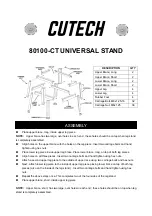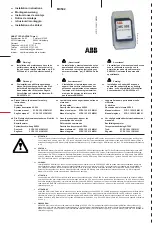
10
XSTORAGE HOME 3P USER MANUAL
MN700011EN December 2020 www.eaton.com
3.2 Protection from electric shock
3.3 Warning decals and rating plate
An electric shock can be fatal.
Avoid touching internal or external normally live parts whilst the system is powered on.
Cables and connections must always be secured, in good conditions, insulated and suitably sized.
The labels on the equipment must NOT be removed, damaged, soiled or hidden.
The labels must always be visible and in good conditions.
The technical data shown in this manual do not however replace those shown on the data plates on the equipment.
The equipment contains capacitors that store static electricity, which could produce dangerous electric discharges.
Make sure that the devices have discharged their energy before carrying out any work on the equipment.
10 min
Improper or unauthorized use:
Although carefully constructed, all electrical appliances can catch fire.
The xStorage Home 3P system is intended for indoor installation.
Optimal operation of the xStorage Home 3P system is ensured at a maximum ambient temperature of 40 °C (104 °F).
The xStorage Home 3P system must be transported and stored in indoor locations with a temperature range of
-30 °C to +70 °C (-22 °F and 158 °F).
The xStorage Home 3P system must be used in locations with no acids, gases or other corrosive substances.
The xStorage Home 3P system must be used and stored in locations with relative humidity ranging from
5% to 95% without condensation.
The xStorage Home 3P system must be transported in locations with relative humidity ranging from 5 % to 95 %.
The xStorage Home 3P system must be used and stored in locations with atmospheric pressure ranging from
86 kPa to 106 kPa.
The xStorage Home 3P system must be transported in locations with atmospheric pressure ranging from 70 kPa to
106 kPa.
The xStorage Home 3P system must be used at a maximum altitude above sea level of 3000 m (9750 feet). For
altitudes above 2000 m, due to the rarefaction of the air, specific conditions may occur which must be considered when
choosing the place of installation. All installations at altitudes above 2000 m must be assessed case by case considering
the following critical issues:
•
Less efficient cooling.
•
Decrease in the dielectric strength of the air and, in the presence of high voltages, the creation of electric arcs.
•
Presence of cosmic radiation that can affect the correct functioning of the electronic components.











































